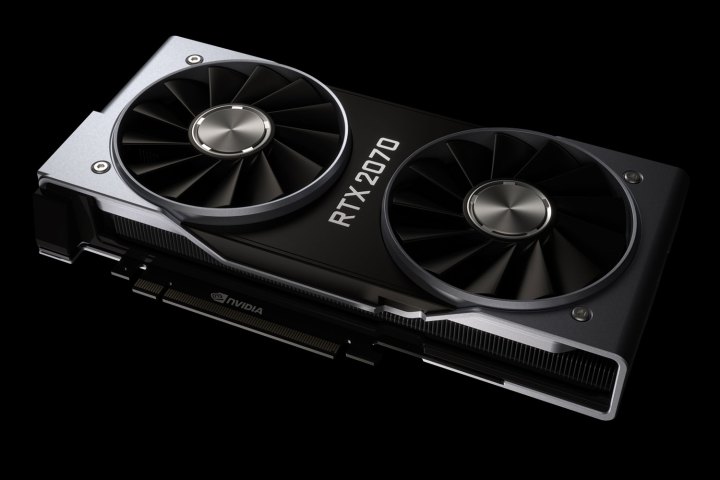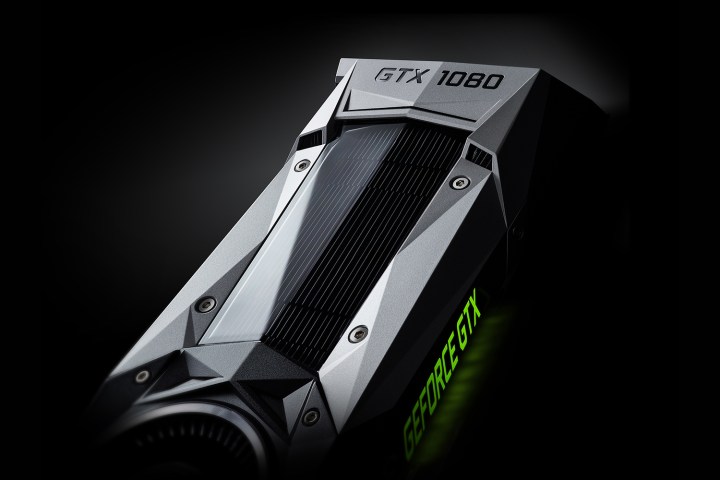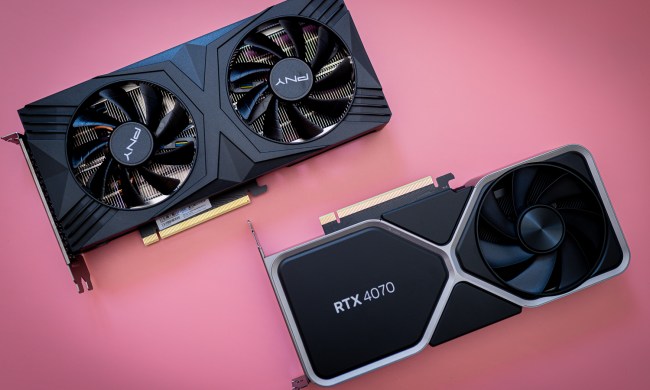
There’s no denying that the top Nvidia RTX graphics cards are the most powerful consumer cards in the world right now (even if AMD is giving them a lot of competition), but with availability what it is, sometimes buying an older card secondhand is a more affordable option. Two of the best cards from their respective generations were the RTX 2070 and the GTX 1080. But how do these cards compare, and if given the chance, which should you buy?
Availability and pricing
The GTX 1080 was originally released in May 2016 with a suggested price of $599. The RTX 2070 debuted in October 2018, priced at $500. In 2021, both of these cards haven’t been on sale for a long time, with the GTX 1080 replaced by the RTX 2080, and the RTX 2070 replaced by the RTX 2070 Super. Those again have been replaced by cards in the RTX 3000 series.
However, due to a global silicon shortage, import tariffs, and cryptocurrency mining demand in 2021, all GPUs are almost impossible to buy at fair retail prices. The GTX 1080 is going for over $400 on secondhand markets, which, for a nearly five-year-old card, is completely off the charts. The RTX 2070 is even worse, often retailing for $600 secondhand — more than it sold for when new over two years ago.
Performance
At launch, the RTX 2070 performed roughly comparably to the GTX 1080, but with newer games, and as support for ray tracing and deep learning super sampling have become more common, not only is it the more powerful card, but it can produce better-looking games at higher frame rates too.
| RTX 2070 | GTX 1080 | |
| Architecture | Turing | Pascal |
| CUDA cores | 2,304 | 2,560 |
| Texture units | 144 | 160 |
| Render output units | 64 | 64 |
| RT cores | 36 | 0 |
| Tensor cores | 288 | 0 |
| Base speed | 1,410MHz | 1,607MHz |
| Boost speed | 1,620MHz | 1,733MHx |
| Boost speed (FE model) | 1,710MHz | 1,800MHz |
| Memory | 8GB GDDR6 | 8GB GDDR5X |
| Memory speed | 14Gbps | 10Gbps |
| Bandwidth | 448GBps | 320GBps |
| Transistors | 10.8 billion | 7.2 billion |
By the numbers, both cards have a slight leg up over the other in certain specifications, and the Founders Editions don’t do anything to close those gaps. The 1080 has 2,560 CUDA cores, while the 2070 has 2,304 — although they’re based on the younger Turing architecture. The 1080 also has slightly higher clock speeds and a few more texture units. However, the 2070 sports GDDR6 memory, giving it a near 50% greater memory bandwidth. It also has a larger die size, with 3.6 billion extra transistors. That has its own efficiency and performance improvements.
This equates to a sub-10% frame rate advantage to the RTX 2070, making it the more capable card. In 2021, these cards are mostly suited to AAA games at 1440p or high frame rates at 1080p, depending on your preference and the types of games you’re playing. If you’re only playing games that demand traditional rasterization performance, either card will do a good job. But if it’s a newer game, and particularly if it has ray tracing or supports DLSS, the RTX 2070 has a huge advantage thanks to its dedicated hardware accelerators.
Ray tracing and DLSS

Alongside its newer architecture, the RTX 2070 also helps introduce RT and Tensor cores that enable ray tracing and DLSS. Of these two cards, those features are only really available on the 2070. While the 1080 can technically perform
The list of supporting games for either or both of these technologies has grown a lot since the launch of the RTX 2070, making it a must-have feature for new GPUs. Ray tracing has full support with all of Nvidia’s latest-generation Ampere GPUs as well as AMD’s RX 6000 series. DLSS isn’t as broadly supported, and AMD doesn’t have a competing solution just yet, but its effect can’t be denied. When enabled, DLSS 2.0 makes it possible to run a game at 1440p but look very close to, or sometimes even better than, 4K. That leads to a great performance leap over native 4K rendering and makes cards that support it, like the RTX 2070, a much more attractive buy if you play or plan to play games that can enable it.
The 2070 is the new 1080 … if you can find it
The biggest difference between the 2070 and 1080 when the former first launched was price. With global GPU shortages the way they are, that’s still the case today, but in the secondhand market. You won’t be able to buy these cards new, and even if you could, you shouldn’t be paying hundreds of dollars for them. With far faster newer-generation cards like the RTX 3060 Ti, and 6700 XT sporadically available, grab one of those instead if you can.
If you are looking at either of these cards secondhand and the price isn’t too ridiculous, the RTX 2070 is by far the better buy. It’s more powerful, and its features can far better keep up with modern games and their developments than the aged 1080.



